Jet fuel or ATF (Aviation Turbine Fuel) prices in the national capital were cut to INR 1.01 lakh per kilolitre (kl) from INR 1.06 lakh on January 1. State-owned Indian Oil Corporation, Bharat Petroleum and Hindustan Petroleum revise ATF prices on the 1st of every month, based on the average international price in the previous month.
The second half of last year saw a steady escalation in the prices of aviation turbine fuel (ATF), with a cut coming finally in November 2023 as crude prices started cooling off.
ATF constitutes a significant portion of an airline's operational expenditures, often requiring fare adjustments to accommodate the impact of increased costs. Lower ATF prices indicate some respite for airfares as well.
The revision of ATF prices is a common practice and is influenced by factors such as the average rate of the international benchmark and foreign exchange rates. These adjustments often made monthly, impact the overall operational expenses of airlines, providing relief or adding to the financial challenges they face, depending on the direction of the change.
On the back of this, shares of InterGlobe Aviation and SpiceJet gained 1.77% and 1.92%, respectively. At 9:30 AM, IndiGo shares were quoted at INR 3,019.60 on the NSE and SpiceJet was quoted at INR 61.20.
Airlines' Shares Fly High
IndiGo - the country’s largest airline and one of the two listed airlines in the country, saw its fuel expenses at 37.15% of total expenditure. In absolute terms, the airline spent INR 5,228 crore on fuel in the first quarter of FY24. For the quarter ended September, the company posted a profit of INR 188.9 crore compared to a net loss of INR 1,583.33 crore in the same period a year ago. Revenue from operations for IndiGo rose 19.5% to INR 14,943 crore, from the year-ago period when the airline had reported a topline of INR 12,497 crore.
SpiceJet, on the other hand, reported a narrowed net loss of INR 449 crore in the September quarter, compared to INR 830 crore in the corresponding period of the previous year. However, consolidated revenue from operations witnessed a 27% year-on-year decline, settling at INR 1,429 crore. Despite these challenges, SpiceJet is actively pursuing growth opportunities, as evidenced by its bid to acquire Go First, which is currently undergoing insolvency proceedings.
The regular revision of ATF prices is a standard industry practice influenced by factors such as the average rate of the international benchmark and foreign exchange rates. These adjustments, occurring monthly, play an important role in shaping the overall operational expenses of airlines, either easing the financial burden or exacerbating the challenges they face, depending on the direction of the change. The reduction in the price of jet fuel, which makes up for 40 per cent of an airline's operating cost, will ease the burden on already financially strained airlines.
Read next
New Design & Test Facility at Aero Engine Research & Development Centre of HAL Inaugurated in Bengaluru
Radhika Bansal
02 Jan 2024
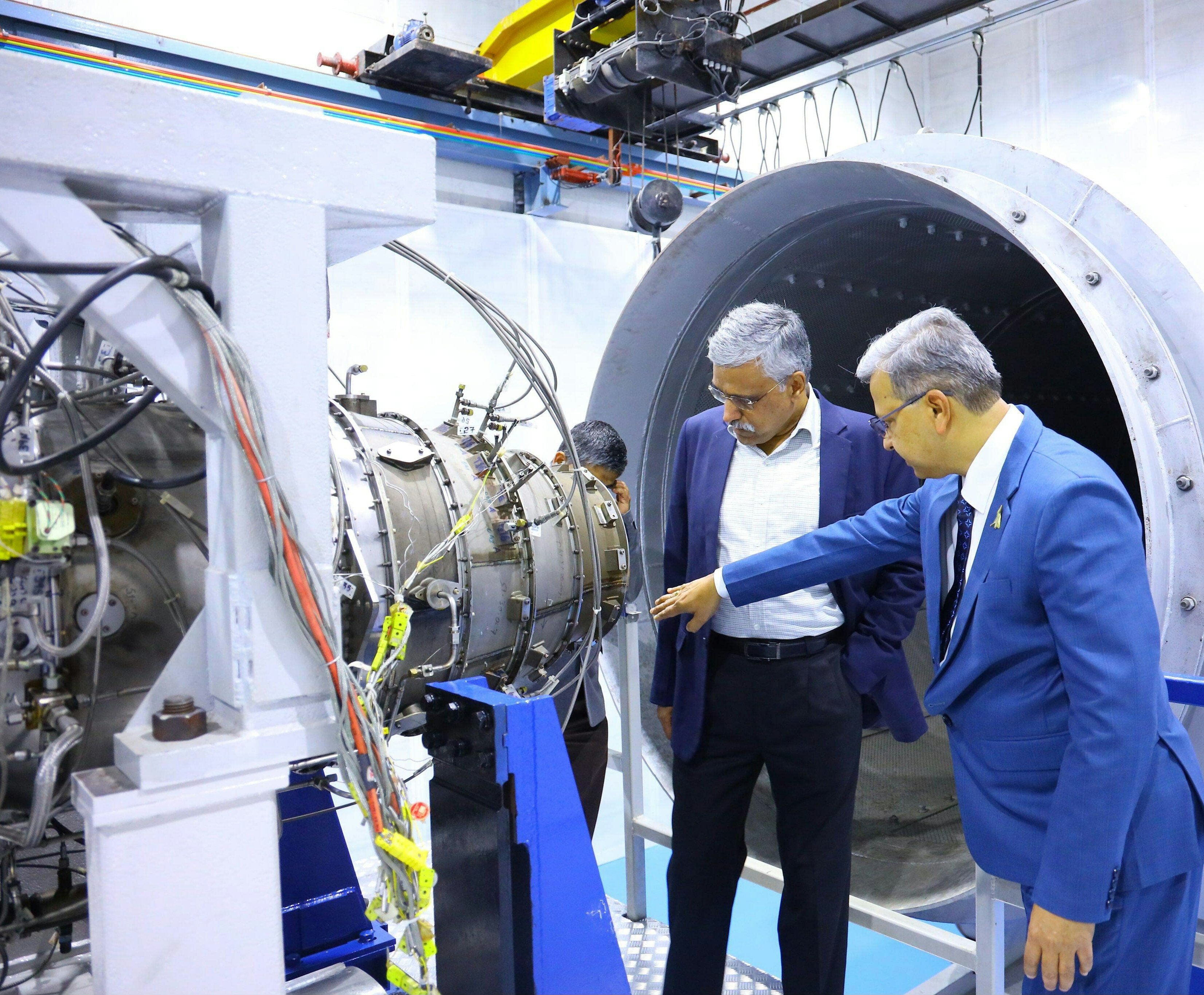
A new state-of-the-art design and test facility at the Aero Engine Research and Development Centre (AERDC) of Hindustan Aeronautics Limited (HAL) in Bengaluru was laid open on Friday, December 29 to facilitate the development of strategic engines for powering trainer aircraft, drones, regional jets and light and medium helicopters.
Defence Secretary Shri Giridhar Aramane inaugurated the centre spanning over 10,000 square meters, which houses special machines, advanced setups leveraging on computational tools, in-house fabrication facility and two test beds for testing HTFE-25 and one testbed each for testing HTSE-1200 and upcoming JV engine for Indian Multi-Role Helicopter (IMRH) to be co-developed by Safran, France and the HAL, the Ministry of Defence said in a statement.
HAL and Safran had in February this year announced a tie-up to produce the engine for the 13-tonne helicopter. As per the agreement, HAL will participate in the design, development and production of the core engine components. Safran already has a joint venture with HAL to manufacture engines for the advanced light helicopter (ALH), weighing 5.5 tonnes. Some 284 of these twin-engine helicopters are flying. This is the only helicopter to be designed and manufactured in India while the rest are of US, Russian, French and UK origin.
Features of the New Facility
The AERDC is currently involved in the design and development of several new engines including two strategic engines -- the Hindustan Turbo Fan Engine (HTFE) of 25 kN thrust for powering trainers, UAVs, twin-engine small fighter aircraft or regional jets and Hindustan Turbo Shaft Engine (HTSE) of 1200 kN thrust for powering light and medium weight helicopters (3.5 to 6.5 tonnes in single/twin-engine configuration).
Additionally, the newly developed facility has set-ups for testing air producers of Jaguar, Gas Turbine Starter Unit (GTSU) - 110 M2 and 127E of Light Combat Aircraft, Auxiliary Power Units of IMRH and Advanced Medium Combat Aircraft, Gas Turbine Electrical Generator (GTEG)-60 for An-32 aircraft, the MoD stated. Set-ups to carry out, elaborated by the Ministry, various critical tests for engine components and Line Replacement Units (LRUs) have also been established within the new facility.
The Centre, established in the 1960s, holds the unique distinction of being the only design house that has developed test beds for engines of both Western and Russian origin. The Centre has successfully developed and certified PTAE-7 engine, the first indigenous turbojet engine of India powering Lakshya (Unmanned Aircraft), Gas Turbine Electrical Generator GTEG-60 for starting An-32 aircraft, Air starter ATS 37 and Air producer for starting Adour-Mk 804E/811 on Jaguar Aircraft and Shakti engine for powering ALH to support Ad804/811 engine of Jaguar aircraft.
Officials' Comments
The Defence Secretary, however, stated that the government trusts the capability of the Defence PSU to deliver and make the country self-reliant. “The manufacturing sector is the country’s future and in the coming decades, the HAL should focus on mastering technologies for all types of aircraft. Think ahead as the entire warfare paradigm is changing,” he advised.
Aramane in his address informed the Ministry, highlighted the role of unmanned aircraft in future warfare and encouraged the HAL to collaborate with other private companies to develop new platforms.
Chairman & Managing Director (Addl. Charge) of HAL CB Ananthakrishnan said, “The development of this facility marks a key milestone in HAL’s growth trajectory. It is a testimony of our commitment towards achieving ‘Aatmanirbharta’ in aero-engine design and development.”
At the same time, Dr DK Sunil, Director (Engineering, R&D) outlined the design perspectives of HAL’s R&D initiatives. Senior officials from HAL, IAF, GTRE ADA, NAL, CEMILAC and ADE were present on the occasion.
Read next
Boeing Recommends Airlines to Check Their B737 MAX Fleet for Possible Loose Hardware
Radhika Bansal
02 Jan 2024
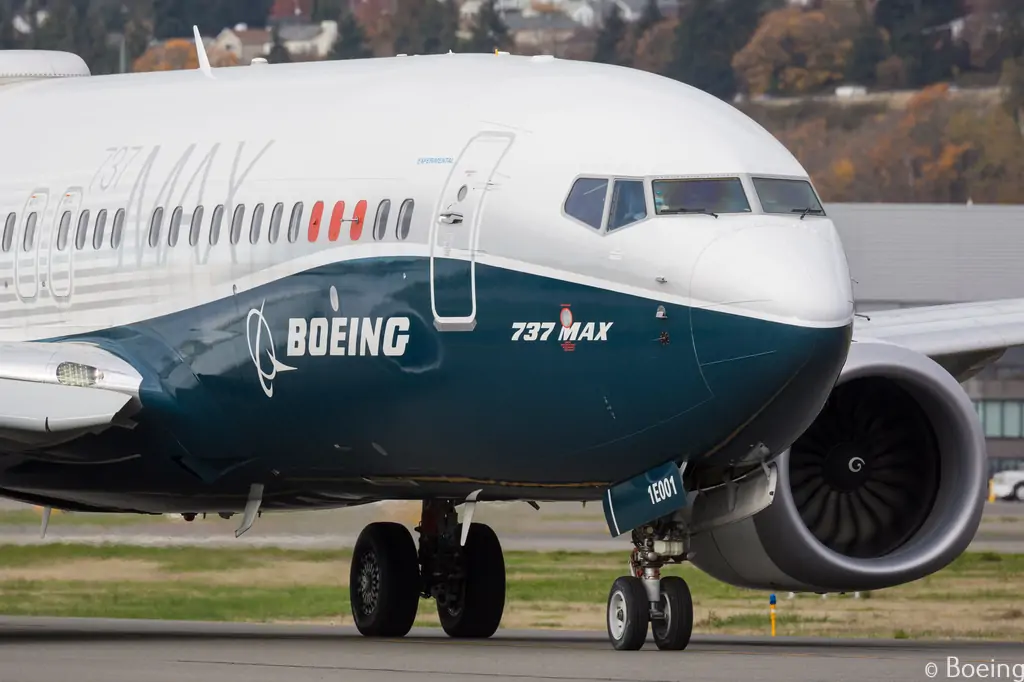
Boeing has recommended airlines to conduct an inspection of their B737 Max fleet after an international operator discovered a bolt with a missing nut while performing routine maintenance. In a statement on Friday, December 29, Boeing said the issue identified on the particular airplane has been remedied.
In India, three airlines -- Akasa Air, SpiceJet and Air India Express -- have B737 Max planes in their fleet. Akasa Air's full fleet of 21 aircraft is 737 Max, Air India Express has eight out of 38 planes and SpiceJet has 13 out of the 66 planes, according to planespotters.com.
Earlier on Thursday, December 28, the US aviation regulator, Federal Aviation Administration (FAA) issued a statement, saying it was closely monitoring "targetted inspection," of Boeing 737 Max planes for a possible loose bolt in the rudder control system.
"The issue identified on the particular airplane has been remedied. Out of an abundance of caution, we are recommending operators inspect their 737 MAX airplanes and inform us of any findings," Boeing said in the statement.
The aircraft maker said it has informed the FAA and will continue to keep the regulator aware of the progress. Queries sent to SpiceJet and Air India Express remained unanswered while Akasa Air said that the issue has not impacted either its operating fleet or the aircraft deliveries so far.
"We have been made aware of this issue by Boeing. Like all operators around the world, and following our highest standards of safety, Akasa will be following the same checks and procedures that the manufacturer or regulator recommends," an Akasa Air spokesperson said in the statement on Saturday, December 30. The airline further added, “our operating fleet and deliveries are not impacted so far.”
FAA Monitoring B737 MAX Aircraft
Under consultation with it, the FAA in its Thursday, December 28, the statement said, Boeing has issued a Multi-Operator Message (MOM), urging operators of newer single-aisle airplanes to inspect specific tie rods that control rudder movement for possible loose hardware. The FAA will remain in contact with Boeing and the airlines while the inspections are underway, the regulator said.
The agency is asking the airlines to work through their approved Safety Management Systems to identify whether any loose hardware has been detected previously and to provide the agency with details on how quickly these two-hour inspections can be completed. The FAA also said it would consider additional action based on any further discovery of loose or missing hardware.
Boeing, according to the FAA, recommended the inspections after an international operator discovered a bolt with a missing nut while performing routine maintenance on a mechanism in the rudder-control linkage. The company discovered an additional undelivered aircraft with a nut that was not properly tightened, it said.
"The FAA will remain in contact with Boeing and the airlines while the inspections are underway,” the agency said, asking airlines to answer if any loose hardware has been detected previously and provide details on how quickly these inspections can be completed.
Any issue involving a rudder that is not working properly would likely be identified in a pre-flight check, as flight crews routinely examine the rudder system before an aircraft pushes back from the gate, Boeing said.
The 737 MAX was grounded for 20 months worldwide after two fatal crashes in 2018 and 2019 killed 346 people in Ethiopia and Indonesia. Boeing is still awaiting certification of its smaller 737 MAX 7 and larger MAX 10. The FAA has carefully scrutinized the MAX. The FAA in 2021 said it was tracking all 737 MAX airplanes using satellite data.
DGCA in touch with Indian Carriers
India's aviation regulator, Directorate General of Civil Aviation (DGCA), is closely monitoring the situation and has been in touch with Akasa, Air India Express and SpiceJet, which operate the aircraft. The DGCA has said it is in touch with its US counterpart and Boeing and that the checks currently being carried out are part of the regular process to ensure flight safety.
"This has been an ongoing issue with Max 737 and these are service bulletins issued from time to time by Boeing to the airline operators for the suggested action whenever any issue has come across. We have been in touch with Boeing, FAA and our airline operators in the past too on such issues concerning 737 Max," the DGCA said in a statement.
"In such cases, mitigation as recommended by the Original Equipment Manufacturers is carried out by the airline operator as has been done in the past in respect of 737 Max," it added.
An Air India Express spokesperson said, "As per Boeing's global recommendation for all airline operators, Air India Express will check its Boeing 737-8 aircraft within the timelines. Our unwavering commitment to safety remains paramount."
Read next
Read next
An Air India Airbus A320 plane registered as VT-CIQ, made a heavy landing in Dubai on December 20th creating chaos in the passenger cabin.
The heavy landing occurred on flight AI 933 from Kochi to Dubai and the severity of the landing was such that the plane was parked there for almost a week when flight tracking websites showed it was flown again to Mumbai on December 27.
DGCA Steps In
Aviation regulator DGCA said on Monday, that it has launched a detailed investigation.
The DGCA Air Safety team is also analyzing the DFDR data.
What is a Hard Landing?
As per Airbus, a Hard Landing or a high-load event is any event that is outside of the range of the load conditions that an aircraft will experience in normal operations. The aircraft is designed to withstand a certain level of excessive loads in abnormal conditions or situations but this loading can affect the components of the aircraft’s structure, engines, engine mounts, pylons, and its systems. When such a high load event occurs with forces that exceed these thresholds, action is required to ensure the aircraft remains in a state of continued airworthiness.
High-load events can occur when an aircraft is either in flight or on the ground. For instance, a flight load exceedance may occur if the aircraft encounters severe turbulence and crosswind conditions, or when is flown above its operational speed limits. This includes events where the aircraft’s airspeed was above the allowable limits for extending or operating flaps, slats or the landing gear. A high-load event on the ground is most commonly a hard landing or hard overweight landing, but it can also be caused by abnormal lateral loading when landing or taxing in severe crosswinds.
When flight crew report a hard or hard overweight landing, the maintenance personnel will use AMM instructions to analyse the LOAD<15> report and determine if any maintenance tasks are necessary. The purpose of this report is to assist the decision making regarding the AMM tasks that should be carried out.
Phase 1 AMM Inspection Items: General inspection for primary damage to the airframe, engines and pylons and for any indication of remote internal damage.
Phase 2 AMM Inspection Items: Detailed inspection of internal areas and some component removal may also be requested.
Phase 3 AMM Inspection Items: Detailed inspections that may require component removal and strip down.
Read next
Air India will begin flying its brand-new Airbus A350-900 widebody jets on domestic routes later this month offering passengers a feel of its new product with fares starting at around Rs 5000. The airline took delivery of its first A350 in December. This plane will eventually be flown on international routes but the airline has decided to first train its staff and create a talent pool by doing domestic sorties.
“Ushering in the most visible manifestation of Air India’s epic transformation journey, the A350 aircraft will be later deployed for longer-haul flights to destinations across continents,” the airline said in a statement on Monday opening domestic bookings.
Registered as VT-JRA after its founder JRD Tata, this A350 will begin flights between Mumbai, Bengaluru, Chennai, Hyderabad, and Delhi starting January 22nd.
The airline has priced economy tickets aggressively but those for its business class come with a premium, according to data from the airline's website. For example, on the first Bengaluru - Mumbai flight AI-589 departing at 7 am, economy class tickets are available for Rs 4,800 while the cheapest same-day ticket for a morning flight is available from SpiceJet at Rs 3,600.
In business class, however, the same ticket will cost Rs 44,000 even though a business class on Air India's own narrow-body Airbus A320 plane is priced only at Rs 21,000 for the same day. The second most expensive ticket is by Air India's sister concern Vistara at Rs 30,000.
Air India’s A350-900 aircraft comes in a three-class cabin configuration with 316 seats: 28 private business suites with full-flat beds, 24 premium economy seats with extra legroom and other amenities, and 264 economy seats. All seats on the aircraft, which run on Rolls Royce Trent XWB engines, feature a Panasonic eX3 in-flight entertainment system and HD screens.
Air India's website did not provide the option to book premium economy tickets as of late Monday evening.
The airline will get 20 Airbus A350s as part of its record $70 billion 470-plane order last year.

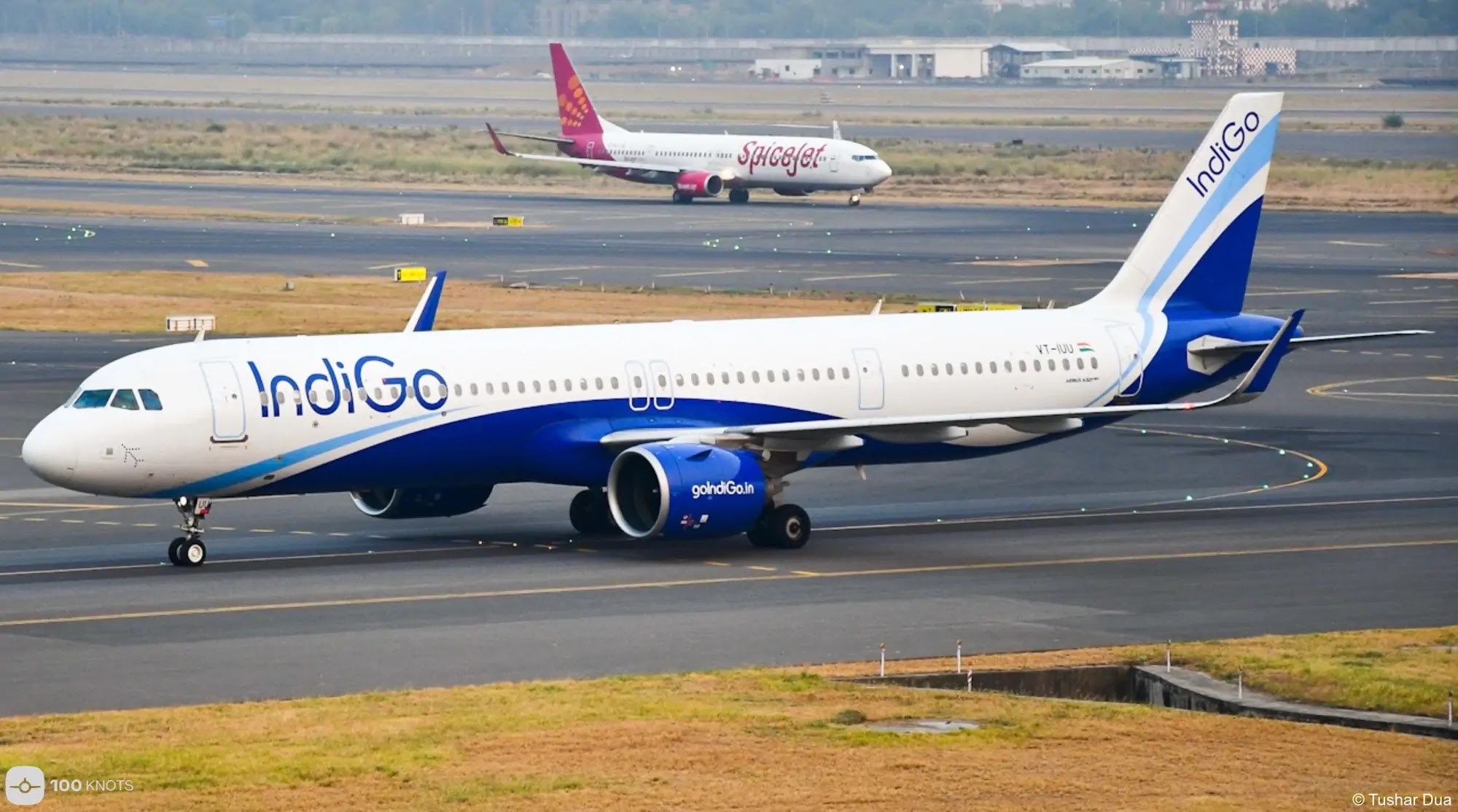


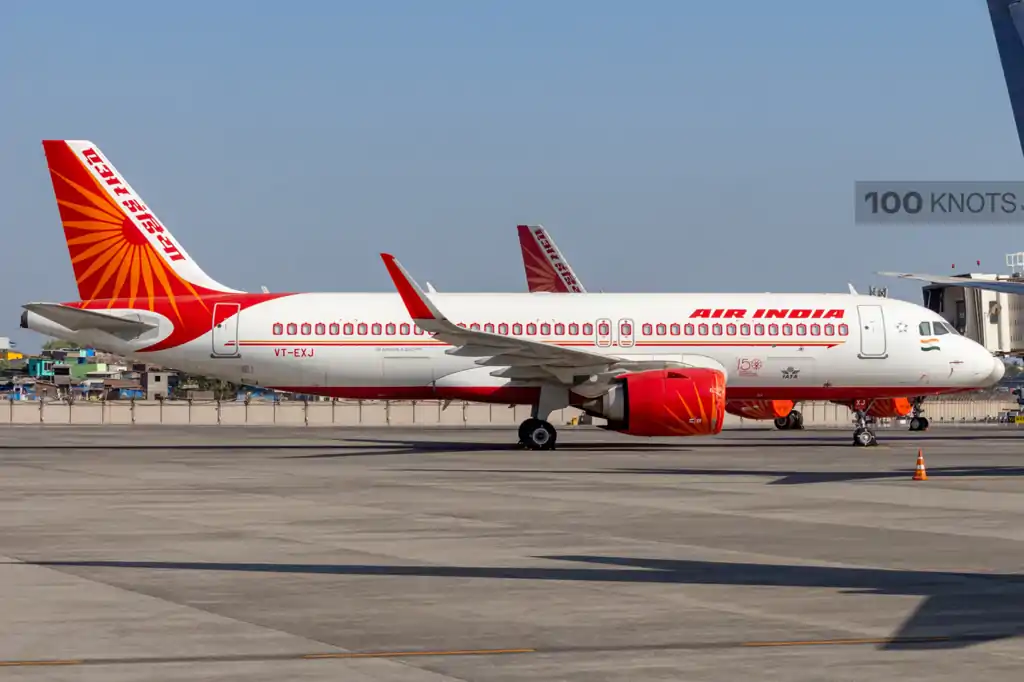
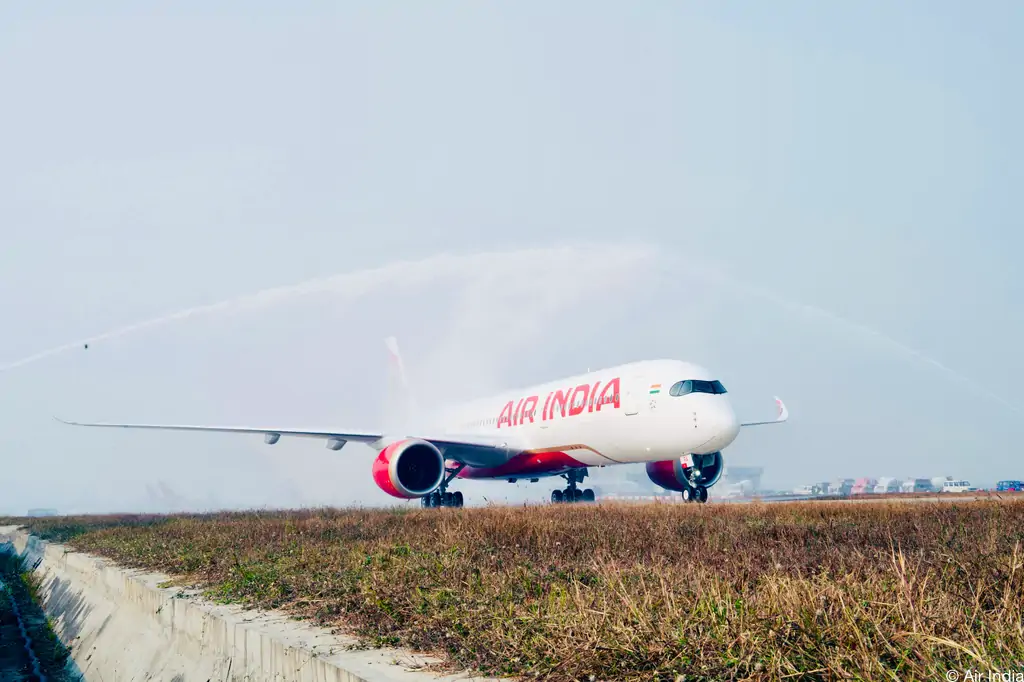
Comment